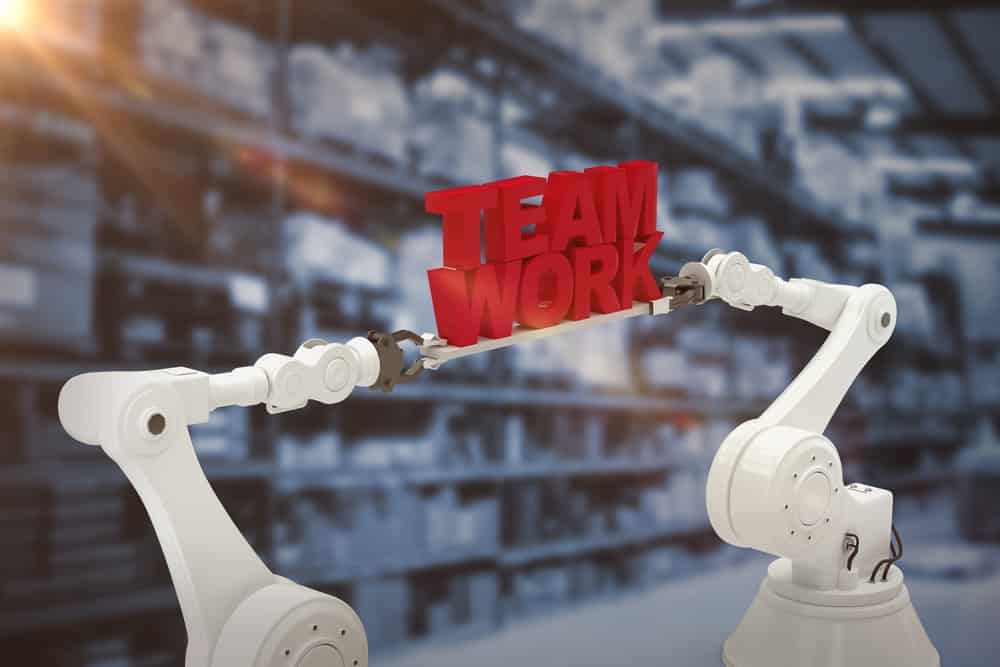What It Means to “Trust the Team”
As any employer will tell you without hesitation, getting the right team in place is important. Yet actions speak louder than words and, in some business sectors, the actions of employers seem to contradict the company's stated position.
This is inevitably true of the supply chain sector, one of many industries moving very deliberately towards technological developments that could displace human workers with automated systems.
From the automation of order fulfillment and self-driving delivery vehicles to planning software and artificial intelligence handling service questions, empowering employees seems to be on the backburner when set alongside the latest technology.
As Lauren Weber puts it in a recent Wall Street Journal article: "Never before have big companies tried so hard to hand over chunks of their business."

The Value of Putting People First
Despite some excitable headlines, automation isn't moving quite as fast as the media would have us believe. For proof of that in our industry, simply look at peak season preparation. It isn't thousands of robots being hired to successfully navigate the holiday rush!
Nonetheless, new fulfillment technology and systems are undeniably influential at every stage of the supply chain.
However, it isn't the automation or algorithms that are going to come up with unique business ideas and ways to improve your operation.
For that, you'll need people; experienced, passionate people who are engaged with the company's mission and direction.
The value of investing in people becomes clear when we consider the cost of overlooking them. According to Rework/Vital Smarts, the dollar value of every employee idea that goes unspoken is $7,500.
Even more concerning is the study's finding that several days worth of productivity are lost when employees feel they are unable to actively contribute their ideas. Only one percent of respondents felt "extremely confident voicing their concerns." Even if this improves to 10 or 20 percent in your organization, it leaves a large portion of the workforce disengaged, limiting their passion and productivity.
What these figures seem to show is a lack of trust between those who make the big decisions and the workers tasked with turning them into an operational reality.
Senior managers in these situations may use the word "team" on a regular basis, but are they living up to the true value of the term?

Trust the Team
One of Capacity's core business values is contained in three short words: Trust the Team.
It's a deceptively simple summary that encapsulates a philosophy that can be complex to enact on a daily basis, yet which is crucial to the company's long-term success. With so many moving parts - and brands who rely on them all working seamlessly to get orders out to customers with high expectations - it's essential that employees at all levels feel empowered to control their part of the process and offer input when things aren't going to plan.
Much of this relies on direct communication. "No triangulation," as Capacity's CSO and co-founder Thom Campbell puts it. "We learned early on from our first client that if person/department A has a challenge with person/department B, they should not address the matter with party C. Not always easy, but almost always best."
That commitment to direct communication must also extend to clients. If a client needs to speak to someone, there should be an on-site expert available to answer their questions. Again, this means that passionate team members need to be empowered at every level. If that sounds complex or expensive, think about the cost of passing a client query around to several different departments before they can get an answer. Prevention is infinitely preferable to the cure in this scenario!
In a perfect world, every team member would reach this level of empowerment. The reality is that some employees are more engaged than others, so an organization must put processes in place to elevate those people to positions of responsibility.
Characteristics to watch for include:
- A strong desire to understand the client's business,
- The ability to not only flag challenges, but also suggest solutions,
- Personable and willing to listen carefully before responding or recommending a course of action,
- A natural ability to organize people and resources around them, even when they aren't directly responsible.
This list isn't exhaustive but it provides a base for identifying the team members who are most likely to go above and beyond expectations for your clients. Furthermore, these are traits that other employees will admire and hopefully emulate as they see colleagues rewarded for displaying them.
In summary, if you want outstanding service to spread throughout your organization, trust and empower those who are expected to deliver it.
Given time and development of systems that encourage these practices, a company can move decision-making beyond the boardroom to spur greater participation and productivity at every level of the organization.